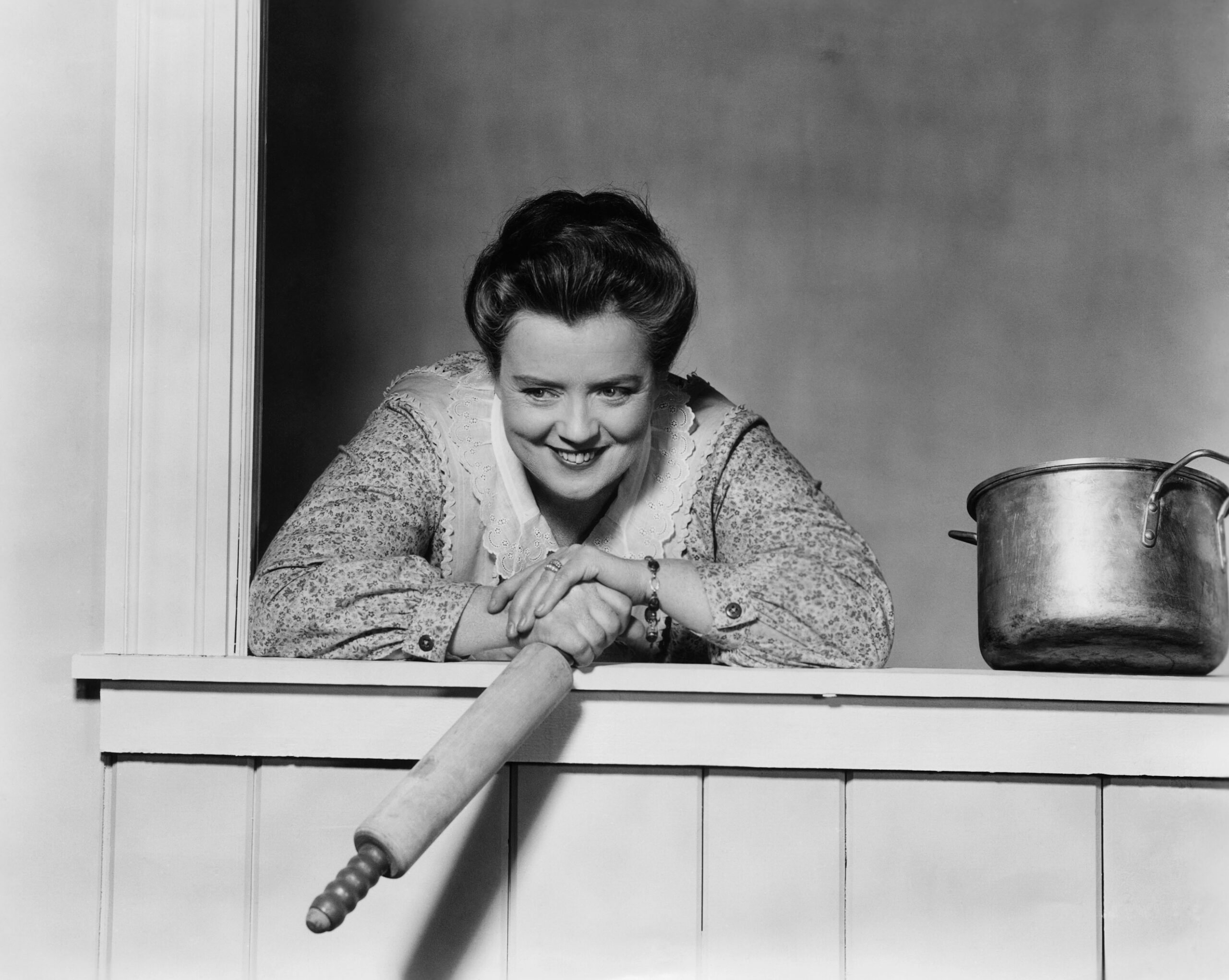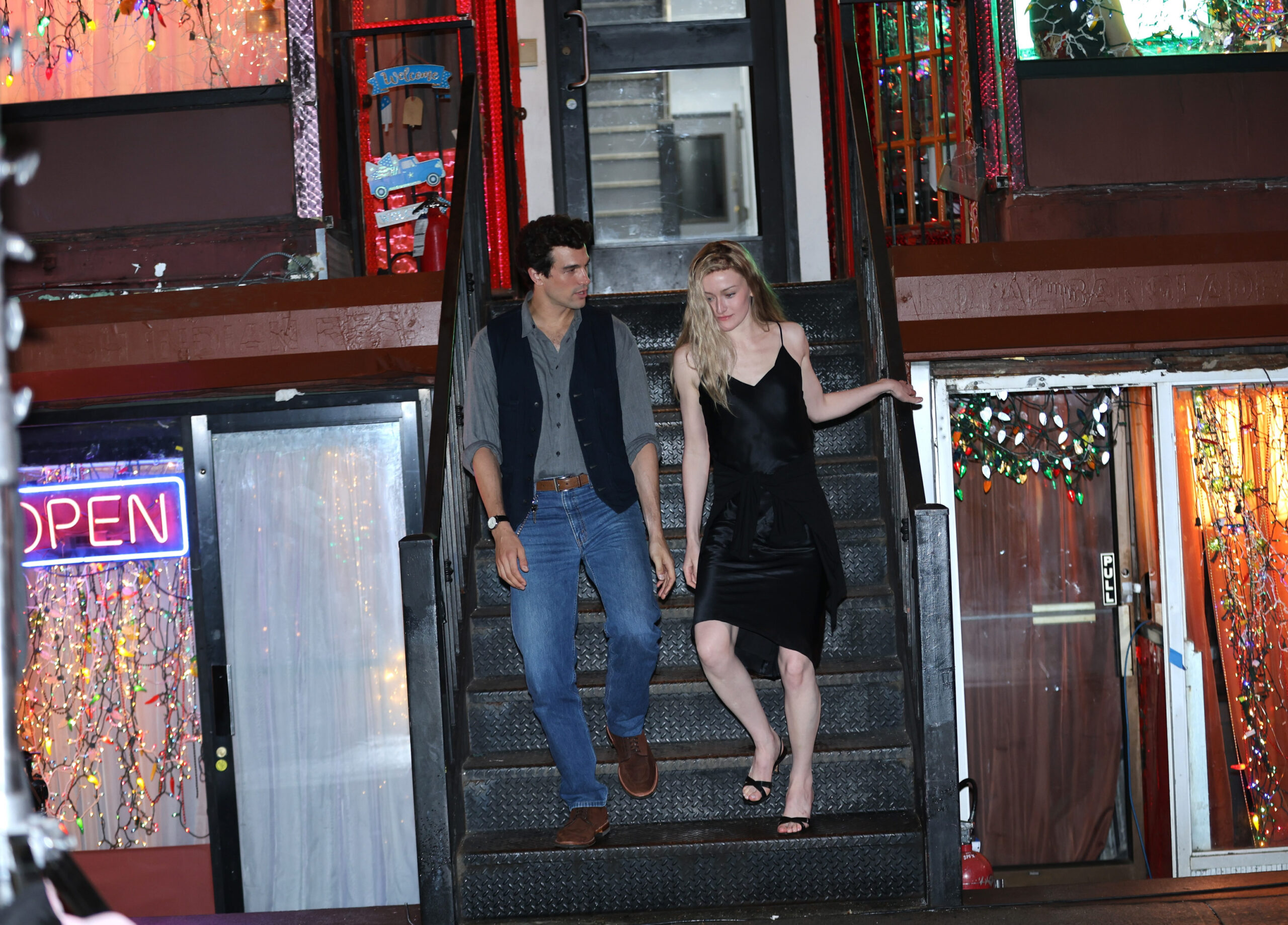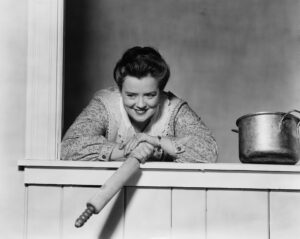The Untold Truth About Aunt Bee: How Frances Bavier’s Hidden Struggles Shaped ‘The Andy Griffith Show’ Legacy Forever
Frances Bavier spent more than four decades working in stage, film and television, but for generations of fans she will always be Aunt Bee—the kind-hearted, apron-wearing matriarch from The Andy Griffith Show. For Bavier, the role was both a blessing and a burden, one that brought her enduring fame and also blurred the lines between her public persona and private self.
“I think Aunt Bee is so much nicer than the real me,” she admitted candidly to the Star-Gazette in 1966. “Unlike plays in which you play a character only a couple of hours each night, you must be a television character 12 hours a day. And even when you go home, people don’t recognize you as you, but for the character you play. It can be awfully confusing.”
The fame was so overwhelming at times that she sought professional help just to regain a sense of personal identity. “You can’t be an actress for 40 years, living in a world of make-believe, and not be affected,” she explained. It didn’t help that attempts to play against type were met with backlash. Yet despite the typecasting and inner conflict, there was a part of her that remained grateful. “Sometimes it gets me down to think I’ve lost my own identity,” she once said, “but other times I get a lift when I realize that I’m really doing quite well.”
A different path than planned

Born on December 14, 1902, in New York City, Frances Elizabeth Bavier originally planned to become a teacher. That was the goal when she enrolled at Columbia University. “I was bad there,” she told The Charlotte News. “Very bad. Actually, I was terrified. That’s probably the reason I enrolled at the American Academy of Dramatic Arts.”
Bavier’s time at the Academy set her on a very different course—one that would eventually land her on Broadway, on television screens across the country and ultimately in the fictional town of Mayberry. Her first big break came under unconventional circumstances. In a 1943 interview with The Brooklyn Daily Eagle, she recalled being an understudy in a vaudeville skit when the ingénue had to bow out due to pregnancy. “The doctor ordered her to quit work and it was I, the understudy, who gave thanks for that ‘act of God.’”

That lucky break was the first of many. “Every time I’ve been an understudy, I’ve gone on,” she noted. “And when I followed Dorothy Stickney in On Borrowed Time, I not only completed the Broadway run, but I also played the part in Chicago.”

But it wasn’t without its toll. “It is actually a physical shock requiring every bit of reserve energy,” she explained of those moments when she had to jump into a role. “The ordeal is terrific since you must make good in one performance and it’s got to be your best. Nevertheless, it is very fine training.”
Her stage résumé grew steadily, with credits that included Black Pit, Native Son, Kiss and Tell and Point of No Return. She was establishing herself as a reliable and gifted performer.
A personal crossroads

While her professional life was gaining momentum, her personal life was less defined. For years, reports varied on whether Bavier had ever been married. Some sources listed a brief marriage to a man named Russell Carpenter from 1928 to 1933, but Bavier herself seemed to acknowledge a former spouse in a 1964 interview with the Star-Gazette, though she didn’t name him.
“I married a man who was charming in every way,” she said, “except that, being non-professional, he had little patience with my dedication to acting. I wanted to be both wife and actress, but learned quickly that this is impossible, at least in my specific case.”

She added that while many psychologists believe women can successfully juggle both family and career, “That is generally not the husband’s point of view and I sympathize entirely with the man who wants his wife to be completely devoted to him and their children.”
As Bavier saw it, marriage and a stage career were rarely compatible. “Actresses, either dedicated or successful because of their glamour, make very poor wives,” she said bluntly. “It’s an exceptional woman who can make a peak success of both marriage and a career in the theater.”

Though Frances Bavier had appeared uncredited in the film Girls About Town as early as 1931, it wasn’t until the 1940s and ’50s that her screen work picked up momentum. She appeared in the western musical O, My Darling Clementine (1943), the sci-fi classic The Day the Earth Stood Still (1951) and later in The Stooge with Dean Martin and Jerry Lewis (1951). The 1950s saw her rack up credits in a range of films, including The Lady Says No, Sally and Saint Anne, My Wife’s Best Friend, Man in the Attic, The Bad Seed and It Started With a Kiss.
Television quickly followed. Her first appearance came in a 1952 episode of Racket Squad, and she began landing roles on a variety of anthology shows and series such as Dragnet and The Lone Ranger. A key early role came in the sitcom It’s a Great Life (1954–1956), where she played Mrs. Amy Morgan, the matron of a boarding house. As with much of her work, it echoed the warm, domestic authority figure that would later define her most famous role.
Becoming Aunt Bee

By 1960, Frances Bavier stepped into the shoes of Aunt Bee on The Andy Griffith Show—a character who would become as beloved as any in television history. She remained with the series for its entire eight-season run and would later carry the role over into the spin-off Mayberry R.F.D. To fans, Bavier was Aunt Bee. But behind the scenes, the connection was more complicated.
“[She] was a rather remote lady,” said producer Sheldon Leonard in The Andy Griffith Show Book. “Highly professional and a fine comedienne, fine actress with very individual character. She was rather self-contained and was not part of the general hi-jinks that centered upon Andy on the set.”
Richard Linke, another producer, echoed the sentiment: “She was very touchy and moody due to her age and you had to be very careful how you treated her and what you said around her. I think Andy offended her a few times, but they became very close friends.”
Actor Jack Dodson, who played Howard Sprague, put it more gently: “Frances was temperamental and moody, but she kept 99 percent of that to herself. Once in a while, she would get mad at someone. She was the only person in the whole company whose feelings you had to be careful not to hurt.”
A difficult reputation
Pop culture historian Geoffrey Mark offered a more pointed view: “She was a very talented lady, but she was very difficult to work with and nobody could really figure it out. Eve Arden had trouble with her on The Eve Arden Show. Howard Morris, who played Ernest T. Bass and directed episodes, said that directing Frances was like stepping on a landmine. Ask her to move three inches to the right, and she’d blow a fuse. It was, like, ‘I’m an actress and I know what I’m doing.’ But the truth is, an actress takes direction.”

Some of her frustration may have stemmed from her expectations. Mark notes that the show’s pilot centered heavily on Aunt Bee and her relationship with young Opie, played by Ron Howard. But in practice, the show’s focus shifted quickly to the chemistry between Andy Griffith and Don Knotts, with Aunt Bee becoming more of a supporting player. That dynamic changed only in the final seasons, when Knotts departed and Bavier’s screen time increased.
“She liked to be the center of attention,” he adds. “And when she wasn’t, she didn’t like it. She and Andy Griffith did not get along at all. She was practically rude to him.”
Longing for more
Even while the show was riding high in the ratings, Frances Bavier often spoke of feeling isolated in Hollywood. In a 1961 interview, she shared that her favorite pastime was visiting the supermarket, where someone would always recognize her and smile. “Whenever I feel lonely out here, I just go out shopping,” she said. “Somebody will always say, ‘Why hello, you’re Aunt Bee.’”
But despite the public affection, she longed for the camaraderie of the theater. “In the theater, you make friends and you spend time together when you aren’t working,” she said. “But here, no matter how long you work together, when work is over, everyone says so long and disappears.”

By 1966, her loneliness had deepened. “I don’t have a lot of friends,” she admitted. “I get very annoyed with people and the older I get, the crankier I am.”
According to Geoffrey Mark, “She spent a lot of the 1950s playing the same sort of matronly character. She was definitely typecast, and I’ve heard she was not happy about that.”
Mayberry’s legacy
When The Andy Griffith Show wrapped in 1968 after 249 episodes, Bavier agreed to reprise her role for the spin-off Mayberry R.F.D., which centered on widowed farmer Sam Jones and his young son. For two seasons, she stayed on as Aunt Bee before departing in 1970, to be replaced by Alice Ghostley.
What kept her coming back? According to Bavier, it wasn’t just the money. “Bob Ross, the producer, said to me, ‘You’re the backbone of the show,’” she recalled. “It was flattery that convinced me to continue. And Ken Berry himself came to me and said, ‘Oh, please stay.’”
Before she left the show, her screen time diminished and she quietly stepped away from acting altogether.

After leaving Mayberry R.F.D., Frances Bavier’s acting career essentially came to a close. Outside of one last role in the 1974 family film Benji—where she again played a kindly woman reminiscent of Aunt Bee—she exited the industry for good. She turned down the opportunity to reprise her role in the 1986 reunion movie Return to Mayberry, and Andy Griffith later shared the reason why.
“Frances wanted to do the movie,” he told The News and Observer of Raleigh, North Carolina, “but she told me she simply didn’t want anyone to see how sick she was. She lives by herself, rarely talks to anyone and hopes people will remember Aunt Bee the way she was.”
In the 1970s, Bavier moved to the real-life small town of Siler City, North Carolina—perhaps in pursuit of the idyllic Mayberry lifestyle she had helped bring to life on television. At first, the move seemed promising. She was warmly welcomed by locals, named grand marshal of parades, honored at civic events and became a regular presence in town, driving her Studebaker around like any other small-town resident.
A YouTube historian known as LandumC Goes There reflected, “She moved to Siler City in the hopes of discovering a small town goodness… Naturally, she was warmly received… These plain folks gave her a role to play there.”
An unscripted ending
But that optimism faded with time. Being recognized everywhere wasn’t just flattering—it became exhausting. People stared into her windows, made constant Aunt Bee jokes and treated her as though she were still living in character.
“She actually didn’t have her own personality anymore,” LandumC noted. “She lived through everybody’s eyes of seeing her as Aunt Bee. This continued and it just wore Frances down.”
Her final years were spent in increasing seclusion. According to some reports, she retreated to the back bedroom of her house, curtains drawn tight, living alone with as many as 14 cats. She reportedly had her groceries and other necessities delivered, interacting with others as little as possible.

Still, she occasionally reflected on her role in the town. “I have a great deal to learn from Siler City and North Carolina,” she said in a local TV interview. “It’s an entirely different and new way of life. It’s been a difficult adjustment for me.”
Despite her private frustrations, Frances Bavier eventually found a kind of closure. Geoffrey Mark notes that after she retired, she sent Andy Griffith a letter apologizing for the way she had treated him during their years on the show. For someone who had often seemed guarded and defensive, it was a surprisingly vulnerable gesture.
Frances Bavier passed away on December 4, 1989, at the age of 86. The causes were many—congestive heart failure, breast cancer, arthritis, COPD—but her legacy was simple. To generations of fans, she was Aunt Bee: the warm, wise, slightly fussy woman who held Mayberry together.
She had once lamented how hard it was to separate herself from that role, but in the end, she may have accepted it. Her headstone in Siler City carries the simple epitaph: “To live in the hearts of those left behind is not to die.” And live on she has.














Post Comment